Types of ventilation: we understand the features of air
By combining various types of ventilation in a private house, public building or industrial building, experts strive to ensure an optimal ratio of incoming and outgoing air. Due to this, the oxygen content, temperature and humidity of the internal environment are normalized, which ultimately directly determines how favorable the formed microclimate is for the person.
In our article we will consider the main types of ventilation systems and give a number of recommendations for their design and installation of their own hands.

General classification
Different types of ventilation systems are used in the design of residential buildings, industrial enterprises, public buildings, etc. At the same time, their classification is based on several scales; therefore, it is sometimes quite difficult for a non-professional to understand the nuances.
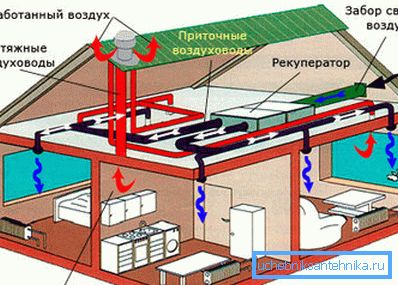
To facilitate the analysis of the used ventilation systems, we summarized the data on them into a single table:
| Classification principle | Variety | Specifications |
| In the direction of air movement | Inlet | Responsible for the entry of fresh air into the room either from the external environment or from a separate tank. |
| Exhaust | Contributes to the removal of exhaust air (usually removes air with high temperature, humidity and a significant content of carbon dioxide). Together with air masses out of the room are also displayed pollution - solid and liquid particles that are in suspension. | |
| Supply and exhaust | A comprehensive system that provides both inflow and exhaust. It can be provided both with the help of different devices, and with the help of double-action instruments capable of changing the direction of the air flow. | |
| According to the method of implementation | Natural | The movement of air is provided by natural factors (temperature, pressure). |
| Forced | To increase the efficiency of air exchange, various inducements are used (fans, deflectors, ejectors, etc.). Also, artificial ventilation provides pressure sufficient for effective filtration or air conditioning. | |
| Combined | Natural air exchange is taken as a basis, however, either the inflow or extract is stimulated with the help of inducing devices. Often, the forced part of the system is switched off, which allows using it only when necessary. | |
| By location | Overall | Responsible for air exchange in the room as a whole. |
| Local | It provides either an excess air supply to this or that area, or more intensive air exhaust. An example would be an ordinary kitchen hood. | |
| To destination | Industrial | Provides air exchange, sufficient for the effective flow of technological processes, as well as for comfortable work in industrial premises. |
| Household | Responsible for the formation of a microclimate in residential and public buildings. | |
| By design | Channelless | Air flows through the room freely. |
| Channel | The movement of air masses is organized using in-wall or external channels and shafts. |
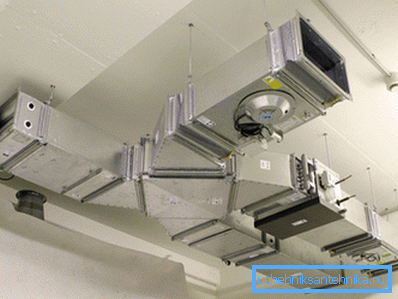
Of course, this list gives only an approximate idea of what is the ventilation of the premises and its types. Moreover, it does not consider special air exchange systems (for example, a complex of devices for smoke removal or equipment for forcing pressure into the working areas of production plants).
However, these nuances will be of interest only to professionals in relevant areas. We also need to understand in detail what types of natural ventilation and forced ventilation can be used in homes and work sites, and most importantly - how to organize them properly.
Natural and forced ventilation in industry
Natural ventilation
Analyzing various types of industrial ventilation (as well as air exchange systems in residential buildings), in the first place they usually mention the natural process. This is quite natural, since in some cases natural air circulation is sufficient to maintain the optimum temperature, humidity and oxygen content.
As for the main types of natural air exchange, experts distinguish unorganized and organized processes:

- In case of unorganized ventilation, the flow of air and its removal from the room are carried out almost uncontrollably.. For this purpose, windows and doors are used, which, if necessary, open or close.
Note! Also, the air can pass through leaks in enclosing structures. This process is called infiltration, and its effectiveness depends on the material of the walls, as well as on the characteristics of their design.
- Residential premises are also characterized by unorganized air circulation.. In most cases, we provide our home with oxygen by simply opening the window. There are exceptions, of course, but we will look at them a little below.
- The system of organized ventilation usually involves the installation of special ducts.. On them, under the action of gravity and thermal pressure, air masses are moved, which allows for the redistribution of fresh air to where it is most needed (most often to the working area).
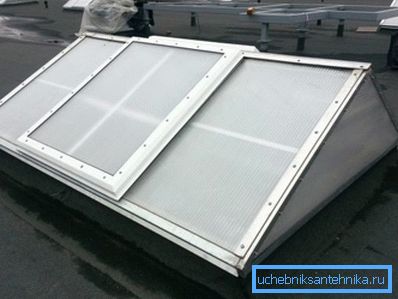
Note! Typically, the flow of air masses into the room through a special structure on the roof of the industrial premises - the so-called svetoaeratsionny lantern.
Using different mechanisms
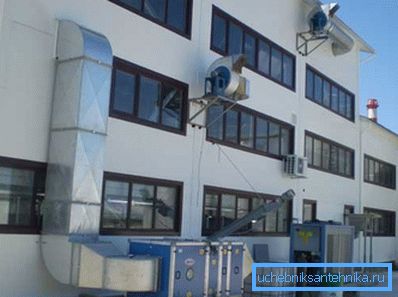
Where natural movement of air masses is not enough, the instruction involves the installation of systems that provide artificial inflow or enhance natural exhaust.
Of course, due to the use of various mechanical devices, the price of such a system will be higher, but it will also work regardless of external factors.
Note! Forced air injection and its removal are more relevant for industrial premises. In residential buildings, their use is limited, but also justified, as we will discuss below.
- The inflow of air to the workshops and other industrial buildings is provided by the operation of ventilation equipment. As a rule, it is installed either on the roof of a building or on a separate site in a conditionally clean area. The pumped air through the channels is distributed inside the building and enters the premises.
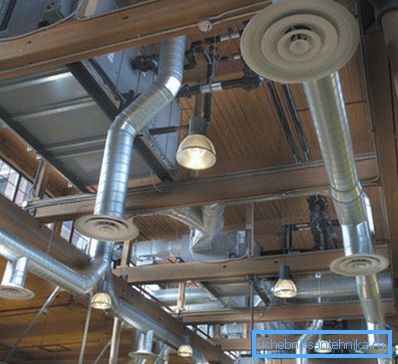
- At the same time, special installations are often installed at the inlet to optimize the parameters of air masses: filtration to remove mechanical impurities, heating / cooling, dehumidification / humidification, etc. In some cases, the enrichment of air with oxygen can be used.
- Effective removal of exhaust air is also a very important process for reducing the harm to workers' health. For this purpose, special exhaust hoods for industrial premises are used: their characteristics allow to suck large volumes of air efficiently from the working area, at the same time capturing dust particles and toxic gases.
Note! Depending on the features of the technological process, either exhaust umbrellas are used, serving a sufficiently large area, limo local air exhausts.
- The exhaust is provided by the operation of internal radial or axial type fans. Also, the fans are mounted inside ducts to provide the desired speed of movement of the air mass.
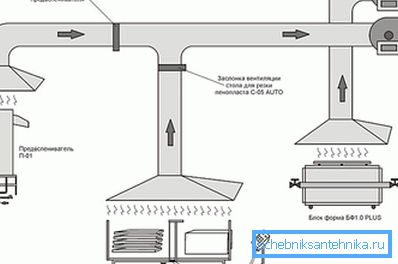
- Exhaust air is emitted into the atmosphere, having passed before it is cleaned from dust particles. Also a number of technological cycles provides for preliminary degassing, i.e. removal of toxic impurities.
Of course, different industrial ventilation is used at different enterprises: its types are quite different from each other, but the general scheme usually remains unchanged.
Inflow and exhaust in a residential building
Air flow into the house
Air exchange of an apartment or private house is fundamentally different from the ventilation system of a workshop or warehouse. As a rule, natural ventilation is taken as a basis, and only in some places are devices that stimulate the movement of air masses.
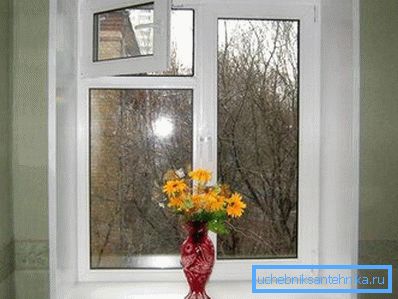
For the operation of the entire system, it is extremely important to maintain a balance between inflow and exhaust.
Oxygen supply is usually provided by such elements:
- Windows, vents and doors - the most common devices for ventilation. It is very important not to forget to open them regularly, since this is what is provided for in the design of most residential buildings.
- Products - air vents in the lower part of the foundation or in the basement. They are responsible for the entry of air into the underground space, provide ventilation (and in parallel with this, drainage) of the basement or cellar.
- Supply valves. Gaining popularity along with the proliferation of metal-plastic windows, the installation of which practically stops the natural infiltration of outside air. Mounted either on the window or in the thickness of the wall, normalize the flow of air masses into the living room.
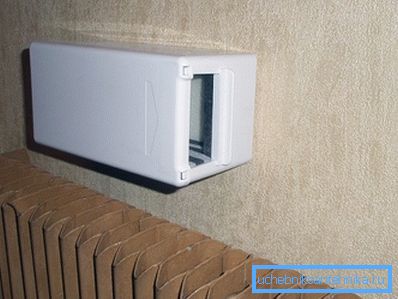
Note! Forcing air into a residential apartment is extremely rarely required. Wall valves with built-in fans are commonly used for this purpose.
Exhaust Air Removal
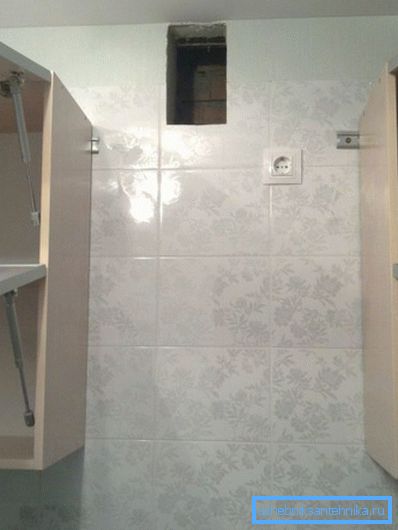
For the formation of a favorable microclimate, air exhaustion is equally important:
- As a rule, the bulk of carbon dioxide is removed from the room through the ventilation ducts (ducks in the bathroom or kitchen). In order for this mechanism to work, the channels must be periodically cleaned of dirt.
Note! In a private house, you can do it yourself, but specialists will have to be called into the apartment, since access to air mines is only on the roof or the technical floor.
- For increased efficiency, you can install elements of forced exhaust. To this end, we place a conventional axial fan at the channel inlet, which we turn on as needed. Most often, these fans are used in bathrooms to remove unpleasant odors and reduce humidity.
- Do not forget about the local hoods. They, by the way, are not only kitchen ones: a retractor dome with an internal engine can be placed in the workshop. Then work with chemical solvents, paints, and also with a large amount of dust will be more comfortable and safe.
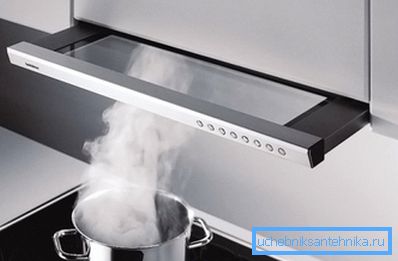
Here, of course, it is worth remembering that even the most powerful hood will not be able to eliminate the problem of air exchange when the inflow is blocked, because this task must be solved in the complex.
Conclusion
The above-described types of ventilation systems and their individual elements must be installed in strict accordance with the requirements of the situation: so, where there is enough natural aeration, the installation of forced air exchange systems will only be a waste of money and effort. Of course, this topic has a lot of nuances, therefore, for a more complete acquaintance, it is worth looking at the video in this article.